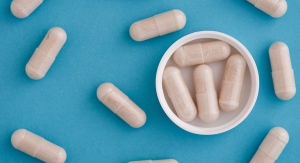Ranjit Puranik & P K Dave11.01.08
Nutraceuticals, dietary supplements, functional foods, fortified foods-and all those products considered "good for you"-have yet to find their true place in India. So far the multi-level marketing companies are the only ones to experience some degree of success.
In markets like India, defining opportunity is heavily dependent on the regulatory framework. Created in 2006, the Food Safety & Standards Act governs the Indian nutraceutical marketplace, but it has yet to find its footing. The act establishes the Food Safety Authority as administrator, headed by a full-time chairperson, who will complete a full year in office as of early 2009. "Members" from academia, industry, allied government ministries and many other entities comprise the Food Safety Authority, and these groups are currently mobilizing to shape the regulatory landscape.
Indian society has always been open to new concepts and quick to adapt. In addition, unlike China, most consumers in the marketplace speak English, particularly the fast-growing middle class.
The shaky financial markets in other parts of the world may have some impact on India in terms of slowing the GDP. But wise investments will most likely emerge unscathed. The good news is that during the past two quarters the Indian market has experienced consistent growth for most consumer durables and consumption of non-essentials.
In fact, India is currently experiencing massive internal consumption, due to a prosperous middle class, which has the money to invest in "nutraceutical" products. This class of consumers is indeed a primary target for many companies.
Calcium supplements, cholesterol control, diabetes, heart care, brain health and cosmeceuticals have shown recent success among the largest consumer groups, including Baby Boomers.
Everyone is rushing to India because the population of 1.1 billion will plateau at 1.5 billion by 2050, a full 25 years after China has already stabilized. The middle class has doubled and today is the fastest growing portion of the population. In the last 60 years of independence India has met remarkable educational goals and today has moved beyond basic food security issues. India has also evolved from a savings economy to a consumption economy.
Most recently, there has been a series of test marketing initiatives undertaken to take the pulse of the market and determine where it's headed. Companies from the Western world have already experienced some defining moments and know what's next. Just take a successful case study from another market, tweak it for the Indian consumer, and success will come.
Currently this market is experiencing 12% growth, while the rest of the world grapples with financial survival. Strong domestic consumption and a free economy define the emerging India.
Distribution is an important issue to consider, especially with regard to national versus regional brands. Perhaps a company could start regionally and move nationally once the product starts to become more recognized among consumers. Concerted and focused launches to specific market segments and regions-clearly communicating the "bargain" in the "benefit to me"-is a mantra for a successful rollout.
Also called the "Fast Moving Consumer Goods" (FMCG) category, the "mainstream market" for India includes most personal care products, cosmetics and toiletries, but few healthy product options. It's here that one wants to be. According to one estimate, the size of the dietary supplement and functional foods segment equals the prescription drug market-worth $15 billion in 2006 and predicted to grow to $25 billion by 2020. Other market estimations and predictions can be found in Table 1.
For now, the most immediate challenge lies on the regulatory front. The 2006 Food Safety & Standards Act borrows heavily from U.S. and U.K. legislation, and as such, is pretty progressive. It stresses testing as well as regulating advertisements and health claims; current players using health claims are running the narrow stream between the food and drug categories. India needs better state and central coordination for a harmonious rollout throughout the 35 states. Once the new legislation takes effect, the drug department's rules and regulations will no longer apply to this new class of products. Further, the local municipal health departments will sign off to the new authority.
For the past two years, in the context of this new legislation, the market and its players have been in a stage of flux. But that's what makes the present time so interesting and exciting for the Indian market. Every company has its own strategy for entering this market. For those that wish to be leaders, not followers, the time for entry is now.
The Food Safety Authority will soon form scientific committees to draw up guidelines and an agenda for reform. Allowances and restrictions will be determined from within this group.
For the traditional segment in India-Ayurveda and other Indian systems of healthcare-the challenge comes from dealing with this new opportunity and tapping consumer interest. The new act prohibits the approval of any substance previously defined as a drug, under the Drugs & Cosmetics Act of 1940, as a dietary supplement, nutraceutical or functional food. Under the provisions of the ancient text, all botanical ingredients are categorized as drugs. Thus an Ayur�vedic herb like Ashwagandha can't be sold as a nutraceutical since it has al�ready been classified as a drug.
Wisdom states "food is thy medicine" and this core truth recognizes different uses of an ingredient as a food, drug and supplement. It's the commerce of big pharma that disfigures the core meaning in definition to a convenient regulatory shield. How the traditional industry reacts to this new market opportunity has yet to be seen. Hopefully this chapter will have an equitable outcome, offering tradition a place in the new marketplace.
About the authors:
In markets like India, defining opportunity is heavily dependent on the regulatory framework. Created in 2006, the Food Safety & Standards Act governs the Indian nutraceutical marketplace, but it has yet to find its footing. The act establishes the Food Safety Authority as administrator, headed by a full-time chairperson, who will complete a full year in office as of early 2009. "Members" from academia, industry, allied government ministries and many other entities comprise the Food Safety Authority, and these groups are currently mobilizing to shape the regulatory landscape.
Indian society has always been open to new concepts and quick to adapt. In addition, unlike China, most consumers in the marketplace speak English, particularly the fast-growing middle class.
The shaky financial markets in other parts of the world may have some impact on India in terms of slowing the GDP. But wise investments will most likely emerge unscathed. The good news is that during the past two quarters the Indian market has experienced consistent growth for most consumer durables and consumption of non-essentials.
In fact, India is currently experiencing massive internal consumption, due to a prosperous middle class, which has the money to invest in "nutraceutical" products. This class of consumers is indeed a primary target for many companies.
Calcium supplements, cholesterol control, diabetes, heart care, brain health and cosmeceuticals have shown recent success among the largest consumer groups, including Baby Boomers.
Why India?
Everyone is rushing to India because the population of 1.1 billion will plateau at 1.5 billion by 2050, a full 25 years after China has already stabilized. The middle class has doubled and today is the fastest growing portion of the population. In the last 60 years of independence India has met remarkable educational goals and today has moved beyond basic food security issues. India has also evolved from a savings economy to a consumption economy.
Most recently, there has been a series of test marketing initiatives undertaken to take the pulse of the market and determine where it's headed. Companies from the Western world have already experienced some defining moments and know what's next. Just take a successful case study from another market, tweak it for the Indian consumer, and success will come.
Currently this market is experiencing 12% growth, while the rest of the world grapples with financial survival. Strong domestic consumption and a free economy define the emerging India.
Distribution is an important issue to consider, especially with regard to national versus regional brands. Perhaps a company could start regionally and move nationally once the product starts to become more recognized among consumers. Concerted and focused launches to specific market segments and regions-clearly communicating the "bargain" in the "benefit to me"-is a mantra for a successful rollout.
Also called the "Fast Moving Consumer Goods" (FMCG) category, the "mainstream market" for India includes most personal care products, cosmetics and toiletries, but few healthy product options. It's here that one wants to be. According to one estimate, the size of the dietary supplement and functional foods segment equals the prescription drug market-worth $15 billion in 2006 and predicted to grow to $25 billion by 2020. Other market estimations and predictions can be found in Table 1.
Immediate Challenges
For now, the most immediate challenge lies on the regulatory front. The 2006 Food Safety & Standards Act borrows heavily from U.S. and U.K. legislation, and as such, is pretty progressive. It stresses testing as well as regulating advertisements and health claims; current players using health claims are running the narrow stream between the food and drug categories. India needs better state and central coordination for a harmonious rollout throughout the 35 states. Once the new legislation takes effect, the drug department's rules and regulations will no longer apply to this new class of products. Further, the local municipal health departments will sign off to the new authority.
For the past two years, in the context of this new legislation, the market and its players have been in a stage of flux. But that's what makes the present time so interesting and exciting for the Indian market. Every company has its own strategy for entering this market. For those that wish to be leaders, not followers, the time for entry is now.
The Food Safety Authority will soon form scientific committees to draw up guidelines and an agenda for reform. Allowances and restrictions will be determined from within this group.
For the traditional segment in India-Ayurveda and other Indian systems of healthcare-the challenge comes from dealing with this new opportunity and tapping consumer interest. The new act prohibits the approval of any substance previously defined as a drug, under the Drugs & Cosmetics Act of 1940, as a dietary supplement, nutraceutical or functional food. Under the provisions of the ancient text, all botanical ingredients are categorized as drugs. Thus an Ayur�vedic herb like Ashwagandha can't be sold as a nutraceutical since it has al�ready been classified as a drug.
For the Future
Wisdom states "food is thy medicine" and this core truth recognizes different uses of an ingredient as a food, drug and supplement. It's the commerce of big pharma that disfigures the core meaning in definition to a convenient regulatory shield. How the traditional industry reacts to this new market opportunity has yet to be seen. Hopefully this chapter will have an equitable outcome, offering tradition a place in the new marketplace.



























